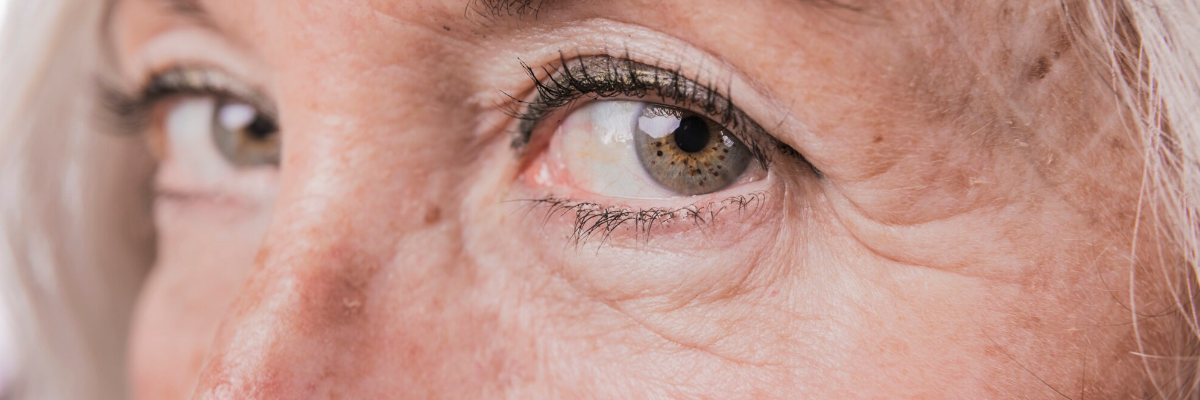Cataracts, a gradual clouding of the eye’s natural lens, are a leading cause of vision loss, particularly among older adults. This condition can make everyday activities like reading, driving, or recognizing faces increasingly difficult. Fortunately, modern cataract surgery is a remarkably safe and effective procedure that can restore clear vision and significantly improve your quality of life. Understanding the symptoms, the surgical process, and the recovery timeline can provide the reassurance needed to move forward with this sight-restoring treatment.
The distinguished ophthalmology specialists at Doral Health & Wellness are dedicated to providing comprehensive and compassionate eye care. Our team utilizes advanced diagnostic and surgical technologies to deliver the highest standard of treatment, ensuring you receive the support needed to achieve optimal visual outcomes.
Understanding Cataracts: Symptoms and Causes
A cataract develops when proteins in the lens of your eye begin to break down and clump together, creating a cloudy area. This prevents light from passing through clearly, resulting in blurred vision.
Common Symptoms of Cataracts
The progression is often slow, but as the cataract grows, you may notice:
- Cloudy, blurry, or dim vision
- Increasing difficulty with vision at night
- Sensitivity to light and glare
- Seeing “halos” around lights
- Frequent changes in eyeglass or contact lens prescription
- Fading or yellowing of colors
- Double vision in a single eye
While aging is the most common cause, other risk factors include a family history of cataracts, diabetes, previous eye surgery, significant sun exposure, and long-term use of steroid medications.
The Path to Clearer Vision: Cataract Surgery
The only effective treatment for cataracts is surgery. Your eye doctor will recommend the procedure when cataracts begin to interfere with your ability to perform daily tasks and can no longer be corrected with stronger glasses.
Modern Surgical Techniques
Modern cataract surgery is a sophisticated, outpatient procedure.
- Phacoemulsification – This is the most common technique. The surgeon makes a tiny incision in the cornea and inserts a small probe that emits ultrasound waves. These waves break up the cloudy lens, which is then gently suctioned out.
- Femtosecond Laser-Assisted Cataract Surgery (FLACS) – A computer-guided laser is used to perform several key steps of the surgery with exceptional precision, including making incisions and softening the cataract before its removal.
Choosing Your Intraocular Lens (IOL)
After the natural lens is removed, it is replaced with a clear, artificial intraocular lens (IOL). There are several types of IOLs available:
- Monofocal IOLs – These standard lenses are set to provide clear vision at a single distance (near, intermediate, or far). Most people choose distance vision and wear glasses for reading.
- Toric IOLs – These premium lenses correct for astigmatism, providing clearer vision than a monofocal lens for patients with this condition.
- Multifocal and Extended Depth of Focus (EDOF) IOLs – These advanced lenses are designed to provide clear vision at multiple distances, reducing or eliminating the need for glasses after surgery. A consultation with the best ophthalmologist near me can help determine which IOL is right for you.
What to Expect: From Consultation to Recovery
The surgical journey is a well-structured process designed for safety and comfort.
Pre-Operative Evaluation
Before surgery, you will have a comprehensive eye exam with an eye doctor in NY. They will measure the size and shape of your eye to determine the correct power for your IOL. You will also discuss your medical history and receive instructions on how to prepare for the procedure.
The Day of Surgery
Cataract surgery is typically quick, lasting about 15-20 minutes. Your eye will be numbed with drops, and you may be given a mild sedative to help you relax. You will be awake but comfortable during the procedure. After a short observation period, you can go home the same day.
The Recovery Timeline
- First 24 Hours – Your vision may be blurry as your eye heals. It is common to feel mild discomfort or a scratchy sensation. You will wear a protective shield, especially while sleeping.
- First Week – Your vision will gradually improve. You will use prescribed eye drops to prevent infection and reduce inflammation. Activities like bending, lifting heavy objects, and strenuous exercise should be avoided.
- Following Weeks – You can slowly resume most normal activities. You will have follow-up appointments to monitor your healing. Complete healing usually takes about four to six weeks.
Your Partner in Restoring Vision
Cataracts can significantly diminish your quality of life, but cataract surgery offers a reliable and effective solution. This advanced procedure replaces the clouded natural lens with a clear, artificial one, restoring the vision you have lost. By understanding the process—from identifying symptoms to selecting the right IOL and navigating the recovery—you can approach surgery with confidence and look forward to a brighter, clearer future.
The expert ophthalmology team at Doral Health & Wellness provides personalized and comprehensive care for a wide range of eye conditions. We utilize state-of-the-art diagnostics and develop tailored surgical strategies to ensure you receive the highest standard of treatment. To schedule a consultation, contact Doral Health & Wellness today at 1-718-365-2555 or visit us at 1797 Pitkin Avenue, Brooklyn, New York 11212. For general information about Doral Health & Wellness services, you can contactor email info@doralhw.org.







